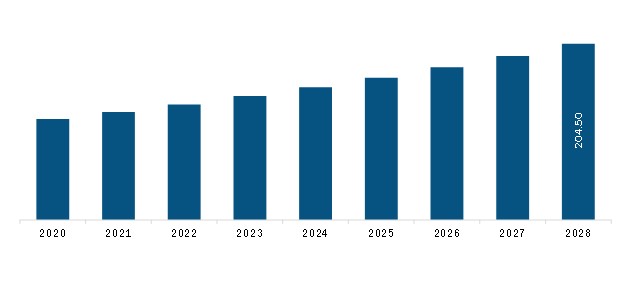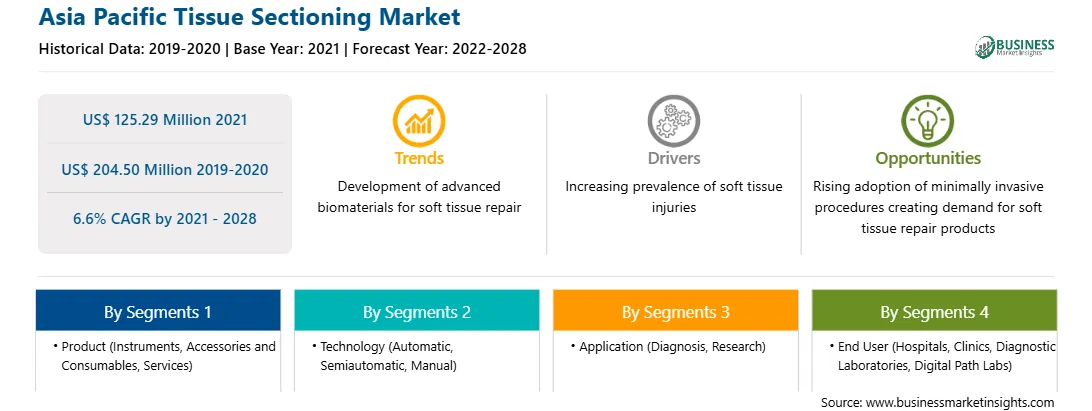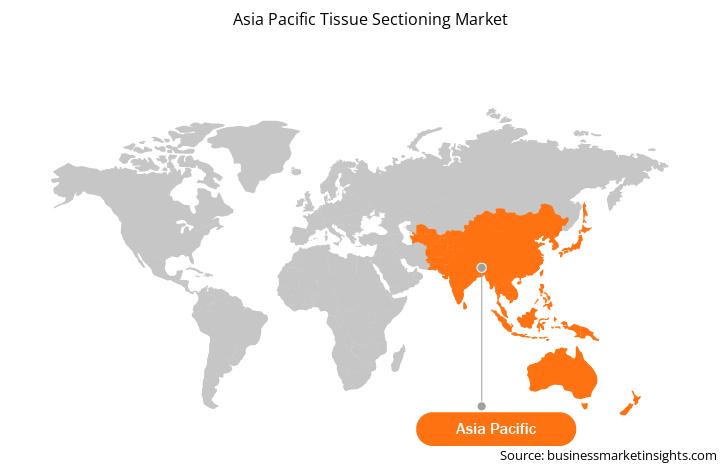The increasing popularity of robots and automation in healthcare and the rising government support for R&D in diagnostics are the main factors behind the growth of this market. However, the lack of skilled professionals is expected to restrict the market growth during the forecast period.
Investments in medical R&D activities are on the rise across the world. The US, Europe, and Indian governments are aggressively investing in research activities to stabilize the country's overall health profile. The government initiatives are creating lucrative opportunities for market players. According to the NITI Aayog, significant growth opportunities emerged in 2021 in the Indian diagnostics sector. Diagnostic and pathology centers are also expanding their offering to include various services in specialized areas. However, noticeable financial backers are building Hub-and-Spoke models, accordingly, merging the business.
Emerging markets in developing countries are offering attractive opportunities to key players for their business expansion, leading to substantial market growth over the next few years. In historical times, tissue sectioning was based on the gross dissection of the tissue sample. With its microwave processing, automation for cutting and staining, microscopy, and digitalization of slide images, modern histology emerged as a world away from primitive laboratories. Robotics in healthcare is an advanced and upcoming method of carrying out tissue sectioning. The comprehensive implementation of robots in tissue sectioning is expected to remove the errors produced in histopathological lab tests across all possible ways over the next few years. There are several ways that robots can increase the result accuracy while simultaneously reducing the cost of the services.
As the world has shifted toward automation, the healthcare sector is still working on automating its services. For instance, in November 2021, New York-based medical robotics company Clarapath netted US$16 million in funding rounds. The company plans to use the amount for developing its automated tissue sectioning device, SectionStar, and launch it into the non-clinical lab market. The device is claimed to be based on an AI-driven algorithm for interpreting human tissue. Clarapath's SectionStar consolidates numerous manual cutting, quality control, and decision-making way into one piece of outfit, performing in better grade tissue sections, rapidly processing edge, and lower overall costs, all while delivering affluent data sets on those tissue samples. The increasing adaptations of robots in developed nations are imminent in the Asia Pacific tissue sectioning market.
Countries in Asia Pacific are facing severe challenges due to increasing incidences of COVID-19. The COVID-19 pandemic has affected the healthcare system in these countries, resulting in a 50% to 70% drop in revenue from March. However, unlike other industries, the pathology and diagnostic industry experienced a massive boom in terms of growth and revenue.
The tissue sectioning market has observed a slightly positive impact of COVID-19 with the rising number of cases and research related to the diagnosis of COVID-19. For instance, in July 2020, a study was published in the Journal of Translation Medicine on the detection of SARS-CoV-2 in formalin-fixed paraffin-embedded tissue sections using commercially available reagents. In this research, a total of eight autopsy lungs, one placenta, and ten kidney biopsies from COVID-19 patients and non-COVID-19 patients were stained with a panel of commercially available antibodies.
As the COVID-19 vaccination drive ran in many Asia Pacific countries, India is proved to run the most effective and fastest drive. For instance, India's vaccination drive was launched on 16th January. Within ten months, it breached the 100 crore inoculation mark, an achievement for the country's healthcare system. There has been an increase in demand for diagnostic tests and research to get the vaccination outcome in this region. The instance mentioned above clearly indicates the upsurge in the tissue sectioning market for various research purposes.

Strategic insights for the Asia Pacific Tissue Sectioning provides data-driven analysis of the industry landscape, including current trends, key players, and regional nuances. These insights offer actionable recommendations, enabling readers to differentiate themselves from competitors by identifying untapped segments or developing unique value propositions. Leveraging data analytics, these insights help industry players anticipate the market shifts, whether investors, manufacturers, or other stakeholders. A future-oriented perspective is essential, helping stakeholders anticipate market shifts and position themselves for long-term success in this dynamic region. Ultimately, effective strategic insights empower readers to make informed decisions that drive profitability and achieve their business objectives within the market.

| Report Attribute | Details |
|---|---|
| Market size in 2021 | US$ 125.29 Million |
| Market Size by 2028 | US$ 204.50 Million |
| Global CAGR (2021 - 2028) | 6.6% |
| Historical Data | 2019-2020 |
| Forecast period | 2022-2028 |
| Segments Covered |
By Product
|
| Regions and Countries Covered | Asia-Pacific
|
| Market leaders and key company profiles |
The geographic scope of the Asia Pacific Tissue Sectioning refers to the specific areas in which a business operates and competes. Understanding local distinctions, such as diverse consumer preferences (e.g., demand for specific plug types or battery backup durations), varying economic conditions, and regulatory environments, is crucial for tailoring strategies to specific markets. Businesses can expand their reach by identifying underserved areas or adapting their offerings to meet local demands. A clear market focus allows for more effective resource allocation, targeted marketing campaigns, and better positioning against local competitors, ultimately driving growth in those targeted areas.

The Asia Pacific Tissue Sectioning Market is valued at US$ 125.29 Million in 2021, it is projected to reach US$ 204.50 Million by 2028.
As per our report Asia Pacific Tissue Sectioning Market, the market size is valued at US$ 125.29 Million in 2021, projecting it to reach US$ 204.50 Million by 2028. This translates to a CAGR of approximately 6.6% during the forecast period.
The Asia Pacific Tissue Sectioning Market report typically cover these key segments-
The historic period, base year, and forecast period can vary slightly depending on the specific market research report. However, for the Asia Pacific Tissue Sectioning Market report:
The Asia Pacific Tissue Sectioning Market is populated by several key players, each contributing to its growth and innovation. Some of the major players include:
The Asia Pacific Tissue Sectioning Market report is valuable for diverse stakeholders, including:
Essentially, anyone involved in or considering involvement in the Asia Pacific Tissue Sectioning Market value chain can benefit from the information contained in a comprehensive market report.